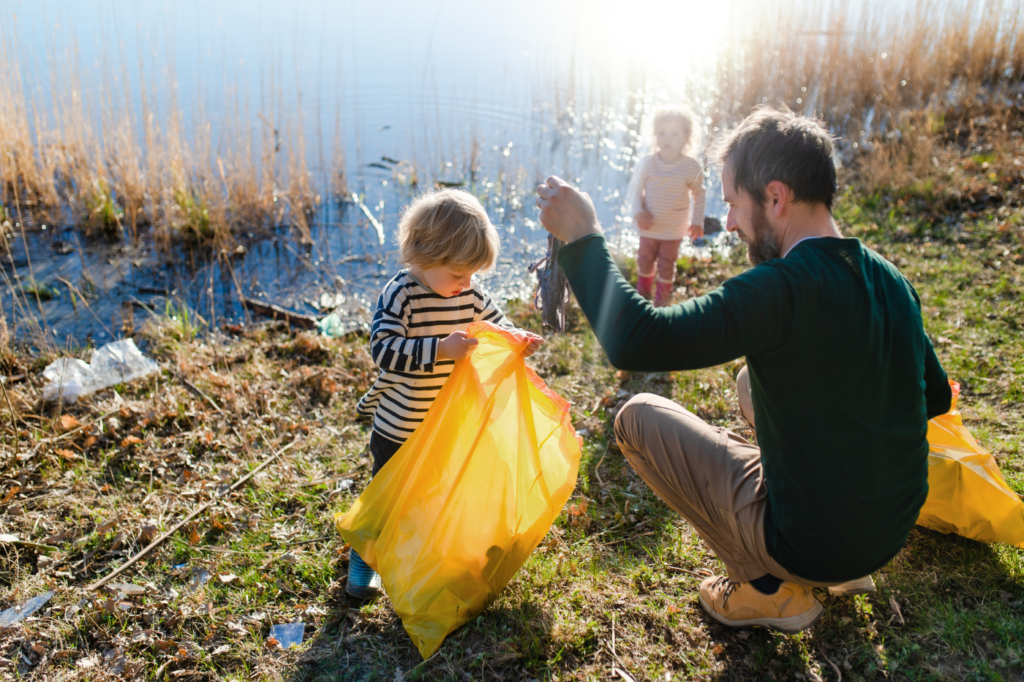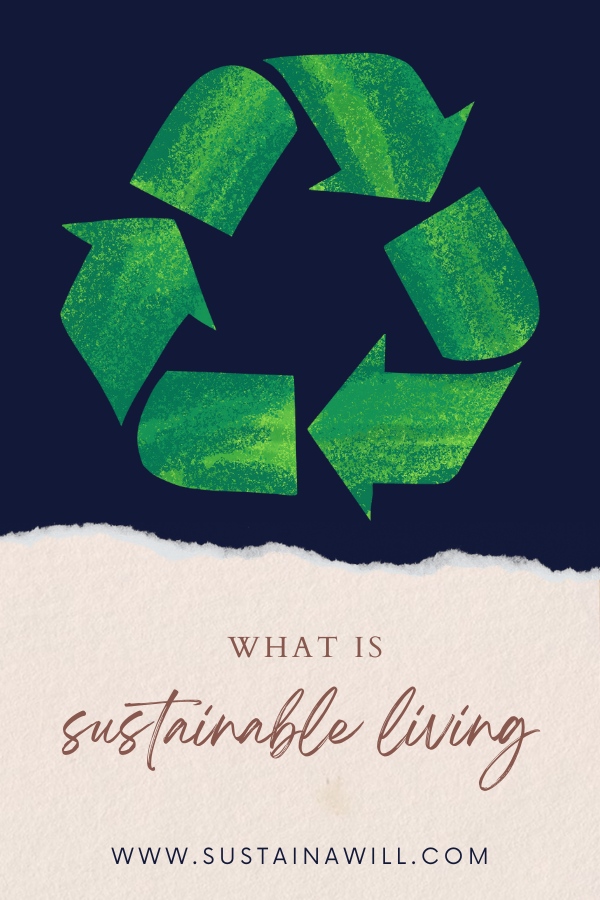Curious about sustainable living but unsure where to start? Our easy guide breaks it down, making eco-friendly choices a breeze. No fuss, no jargon – just straightforward insights to help you live sustainably without the stress.
Join us on this uncomplicated journey toward a more mindful, eco-conscious lifestyle!
What is the meaning of sustainable living?

Sustainable living refers to a lifestyle that aims to minimize one’s environmental impact, ensuring that resources are conserved for future generations. It involves making choices that support ecological balance, social responsibility, and economic viability.
Embracing sustainable practices includes mindful consumption, reducing waste, and supporting eco-friendly initiatives to create a positive impact on the planet.
Sustainable Living in Action:
- Mindful Consumption: Making intentional choices to support eco-friendly and ethical products.
- Waste Reduction: Minimizing waste by practicing recycling, composting, and opting for reusable items.
- Energy Efficiency: Using energy-efficient appliances and practices to reduce the carbon footprint.
- Eco-friendly Transportation: Choosing sustainable transportation options like walking, cycling, or using electric vehicles.
- Conserving Water: Adopting water-saving practices to preserve this vital resource.
- Shop Sustainably & Supporting Local: Purchasing goods and services from local businesses to boost community sustainability. Furthermore, you could also explore purchasing products with a sustainability certification.
- Plant-based Eating: Incorporating more plant-based foods to reduce the environmental impact of food choices.
Sustainable living involves a conscious effort to make choices that promote a healthier planet and a better future for all.
Check out our super helpful sustainable living tips that will transform your home and make a positive impact on the planet!
What is the goal of sustainable living?
Sustainable living aims to meet our needs today without harming the ability of future generations to meet their own needs.
It’s about living in a way that cares for the environment, society, and our economic well-being, ensuring a healthy planet and a better future for all.
What is sustainable living for kids?

Sustainable living means taking care of the Earth and making choices that help the planet stay healthy. It’s like being a superhero for nature!
We can use things wisely, recycle, save energy, and protect animals and plants.
How Can You Do That?
- Recycle: Sort your waste into different bins for recycling. That way, old things can be made into new ones!
- Save Energy: Turn off lights and appliances when you’re not using them. It’s like giving the Earth a little break!
- Use Less Water: When brushing your teeth or washing hands, turn off the tap. Every drop counts!
- Be Kind to Animals: Treat animals with love and respect. They are our friends on this big, beautiful planet!
- Plant Trees: Trees give us fresh air. Planting them is like giving the Earth a big, leafy hug!
- Share with Friends: If you have toys or clothes you don’t need, share them with friends. It’s good for them and the Earth!
By doing these superhero actions, we make sure the Earth stays happy and beautiful for a very, very long time! 🌎💚
Why do we need sustainable living?

Sustainable living is not just a buzzword; it’s a vital shift in our lifestyle to address pressing global challenges.
Here’s a deeper look at why sustainable living is crucial:
- Environmental Preservation: Our planet is facing unprecedented environmental challenges, from deforestation to pollution. Sustainable living aims to preserve ecosystems, protect biodiversity, and maintain the delicate balance of nature.
- Climate Change Mitigation: The burning of fossil fuels contributes to climate change. Sustainable living encourages practices that reduce carbon emissions, helping mitigate the impacts of global warming and ensuring a stable climate for the future.
- Resource Conservation: Many of Earth’s resources are finite, and some are on the brink of depletion. Sustainable living promotes responsible consumption, minimizing waste, and ensuring that resources are used efficiently and equitably.
- Social Equity: Sustainable living addresses social inequalities by advocating for fair wages, ethical labor practices, and inclusivity. It recognizes that a truly sustainable world must be socially just, providing equal opportunities and benefits for all.
- Economic Stability: Long-term economic stability is closely tied to environmental and social health. Sustainable practices reduce the risks associated with environmental degradation, creating a more resilient and robust economy.
By understanding the profound impact of our choices, adopting sustainable living practices becomes not only an ethical choice but a collective responsibility toward building a better, more balanced world.
Is sustainable living a realistic goal?

Absolutely, sustainable living is a realistic and achievable goal. While the journey towards sustainability may seem daunting, the collective efforts of individuals, communities, businesses, and governments can make a significant impact.
Here’s why it’s a realistic goal:
- Global Awareness: There’s a growing awareness of environmental issues and the need for sustainable practices. This global consciousness drives individuals and organizations to adopt eco-friendly lifestyles and operations.
- Innovation and Technology: Advances in technology contribute to sustainable solutions. From renewable energy sources to eco-friendly products, innovations are making sustainable living more accessible and practical.
- Policy Changes: Governments worldwide are recognizing the importance of sustainable practices and implementing policies to support them. Regulations that promote clean energy, waste reduction, and conservation contribute to the feasibility of sustainable living.
- Consumer Demand: As consumers become more environmentally conscious, businesses respond by offering sustainable products and services. This shift in demand encourages further sustainable practices across industries.
- Community Initiatives: Many communities are embracing sustainability through local initiatives. From community gardens to waste reduction programs, these grassroots efforts contribute to a larger, more sustainable impact.
While challenges persist, the momentum toward sustainable living is undeniable. By making informed choices, supporting sustainable initiatives, and advocating for positive change, individuals can contribute to the realization of a more sustainable and harmonious world.
How do you adopt sustainable living as a beginner?

Here’s a step-by-step guide to help you get started:
- Educate Yourself:
- Read and Watch: Explore books, articles, documentaries, and online resources to understand the principles of sustainable living.
- Stay Informed: Follow reputable environmental organizations, blogs, and news outlets to stay updated on sustainable practices and challenges.
- Conserve Energy:
- Switch to LEDs: Replace traditional bulbs with energy-efficient LED lights.
- Unplug Devices: Disconnect electronic devices when not in use to prevent “phantom” energy consumption.
- Reduce, Reuse, Recycle:
- Minimize Waste: Be mindful of packaging and choose products with minimal or recyclable packaging.
- Reusable Items: Opt for reusable bags, water bottles, and containers to cut down on single-use plastics.
- Recycling Bins: Set up separate bins for recyclables, compostables, and regular waste.
- Conscious Consumption:
- Buy Locally: Support local farmers and businesses to reduce the carbon footprint of your purchases.
- Quality Over Quantity: Choose durable, high-quality items over disposable or fast-fashion products.
- Eco-Friendly Transportation:
- Public Transit or Carpool: Use public transportation or carpool to reduce individual carbon emissions.
- Biking and Walking: Choose eco-friendly modes of transportation for short distances.
- Mindful Eating:
- Plant-Based Diet: Consider incorporating more plant-based meals into your diet to reduce the environmental impact of meat consumption.
- Food Waste Awareness: Minimize food waste by planning meals, storing food properly, and composting.
- Support Sustainable Brands:
- Research Brands: Choose products from companies committed to sustainability and ethical practices.
- Secondhand Shopping: Explore thrift stores and secondhand markets for clothing and household items.
- Connect with Others:
- Join Communities: Engage with local or online sustainability communities for support, ideas, and shared experiences.
- Attend Events: Participate in workshops, seminars, or local events focused on sustainable living.
Remember, adopting sustainable living is a gradual process. Start with small, manageable changes and gradually incorporate more eco-friendly practices into your daily life.
Every sustainable choice you make contributes to a healthier planet.
How do you teach kids about sustainable living?

Sustainable living is a valuable lesson for children, fostering awareness and responsibility toward the environment.
Here are engaging ways to teach kids about sustainability:
- Nature Exploration:
- Outdoor Adventures: Take nature walks, visit parks, and explore outdoor spaces to instill a love for the environment.
- Gardening: Involve kids in planting and caring for a garden, teaching them about ecosystems and the importance of plants.
- Eco-Friendly Crafts:
- Recycled Art: Encourage creativity by using recycled materials for art projects. Discuss the concept of upcycling and reducing waste.
- DIY Bird Feeders: Create bird feeders using reusable materials, teaching kids about wildlife and the interconnectedness of ecosystems.
- Storytelling and Books:
- Sustainability Stories: Read books with eco-friendly themes, emphasizing the importance of conservation and responsible living.
- Create Eco-Characters: Invent characters that embody sustainable practices, making the learning experience enjoyable.
- Waste Sorting Games:
- Recycling Relay: Organize a relay race where kids sort recyclables, emphasizing the importance of recycling and proper waste disposal.
- Garbage Sorting Game: Create a game where children match items to the correct bins, teaching them about waste segregation.
- Energy-Saving Challenges:
- Lights Out Night: Have a “lights out” evening, relying on natural light or candles, to demonstrate the importance of energy conservation.
- Unplug Challenge: Challenge kids to identify and unplug electronics not in use, emphasizing the reduction of standby power.
- Water Conservation Activities:
- Save-the-Drop Experiment: Conduct an experiment showcasing the importance of water conservation, involving fun activities like measuring and saving drops.
- Rain Barrel Painting: Decorate a rain barrel together, discussing the benefits of collecting rainwater for plants.
- Sustainable Cooking:
- Cooking Lessons: Involve kids in preparing simple, sustainable meals using locally sourced and seasonal ingredients.
- Composting Education: Teach them about composting kitchen scraps and its role in reducing waste.
- Field Trips and Community Involvement:
- Farm Visits: Take trips to local farms to understand where food comes from and the importance of supporting local agriculture.
- Community Clean-Up: Participate in community clean-up events, fostering a sense of responsibility for the local environment.
By integrating these hands-on and enjoyable activities, children can develop a strong foundation for sustainable living, growing up with a deep understanding of their role in protecting the planet.
Do you need to be rich to be sustainable?

Sustainable living isn’t exclusive to the affluent; it’s a mindset and a set of practices accessible to everyone.
Here are practical tips for adopting sustainability on any budget:
- Thrifting and Secondhand Shopping:
- Affordable Fashion: Explore thrift stores and secondhand shops for clothing, reducing the demand for new items and promoting reuse.
- Furniture and Décor: Furnish your home sustainably by buying secondhand furniture and décor items.
- DIY and Repurposing:
- Upcycling Projects: Get creative with do-it-yourself (DIY) projects, repurposing items you already have to extend their lifespan.
- Homemade Cleaners: Create eco-friendly cleaning products at home using simple, budget-friendly ingredients like vinegar and baking soda.
- Mindful Shopping:
- Buy Only What You Need: Avoid impulse buying and focus on purchasing items you genuinely need, reducing unnecessary consumption.
- Local and Seasonal Produce: Support local farmers and buy seasonal produce, often more affordable and environmentally friendly.
- Energy and Water Conservation:
- Unplug Electronics: Save on energy bills by unplugging electronics when not in use, promoting energy conservation.
- Water-Saving Devices: Install water-saving devices, like faucet aerators and low-flow showerheads, to reduce water consumption.
- Minimalism and Decluttering:
- Simplify Possessions: Embrace minimalism by decluttering and keeping only items that bring value, creating a more sustainable and organized living space.
- Quality Over Quantity: Invest in durable, high-quality items that may cost more upfront but save money in the long run due to their longevity.
- Meal Planning and Plant-Based Eating:
- Reduced Food Waste: Plan meals to minimize food waste and consider incorporating more plant-based options, which can be cost-effective and eco-friendly.
- Bulk Buying: Purchase pantry staples in bulk to reduce packaging waste and save money in the long term.
- Public Transportation and Carpooling:
- Use Public Transport: Opt for public transportation or carpooling to reduce fuel expenses and lower your carbon footprint.
- Bike or Walk: If feasible, choose active transportation methods like biking or walking for short distances.
- DIY Repairs:
- Fix Before Replacing: Learn basic repair skills to fix broken items rather than replacing them, extending the life of your belongings.
- Clothing Repairs: Mend torn or damaged clothing instead of discarding them, promoting a more sustainable wardrobe.
Remember, sustainable living is about conscious choices and mindful consumption rather than extravagant spending.
Does sustainable living save money?

Sustainable living not only benefits the planet but also offers financial advantages.
Here’s how embracing a sustainable lifestyle can save you money:
- Energy Efficiency:
- Lower Utility Bills: Investing in energy-efficient appliances, LED bulbs, and smart thermostats can significantly reduce electricity and heating costs, leading to lower utility bills over time.
- Reduced Consumption:
- Smart Shopping: Adopting a minimalist approach and practicing mindful shopping help avoid unnecessary purchases, preventing impulse spending and saving money.
- DIY and Upcycling:
- Repair Instead of Replace: Learning basic repair skills and upcycling items prevent the need for frequent replacements, saving on the cost of new purchases.
- Sustainable Transportation:
- Less Fuel Expenses: Using public transportation, carpooling, or biking reduces fuel expenses, saving money on gas and vehicle maintenance.
- Zero or Low-Cost Waste Solutions:
- Composting: Composting kitchen waste creates nutrient-rich soil for gardening, eliminating the need for expensive fertilizers.
- Reusable Products: Switching to reusable items, such as cloth napkins and water bottles, eliminates the ongoing cost of disposable alternatives.
- Minimalist Lifestyle:
- Lower Maintenance Costs: Owning fewer possessions reduces the need for storage and maintenance, leading to lower overall costs.
- Plant-Based Eating:
- Cost-Effective Meals: Plant-based diets can be more budget-friendly than meat-heavy ones, as grains, legumes, and seasonal produce are often more affordable.
- Local and Seasonal Shopping:
- Reduced Costs: Buying local and seasonal products supports the community and may offer cost savings compared to imported or out-of-season items.
- DIY Cleaning Products:
- Economical Cleaners: Making your own cleaning products using simple ingredients like vinegar and baking soda is cost-effective compared to purchasing commercial cleaners.
- Secondhand Shopping:
- Affordable Fashion and Furniture: Thrifting and buying secondhand items are often more budget-friendly than purchasing new, especially for clothing and furniture.
While sustainable living may require some upfront investment in eco-friendly products, the long-term savings can be substantial.
By making intentional choices and adopting practices that align with sustainability, you not only contribute to a healthier planet but also enjoy financial benefits over time.
Conclusion
As we wrap up this exploration into sustainable living, remember that small changes lead to significant impacts. Your everyday choices matter.
Ready to reduce your carbon footprint, save money, and contribute to a healthier planet? Dive into sustainable living with confidence.
Start with one change, then another, and watch the ripple effect unfold. It’s not just about you; it’s about the world we share. Take a step toward a greener, healthier future. The journey begins with you!
Ready to make an impact? Begin your sustainable living journey now. Every eco-friendly choice is a step toward a brighter, cleaner future. Don’t just read – act!








